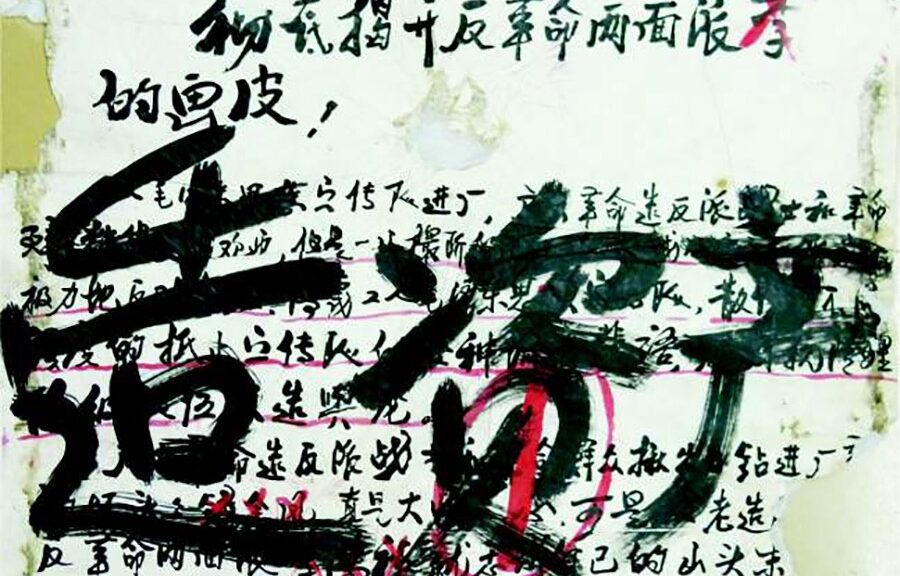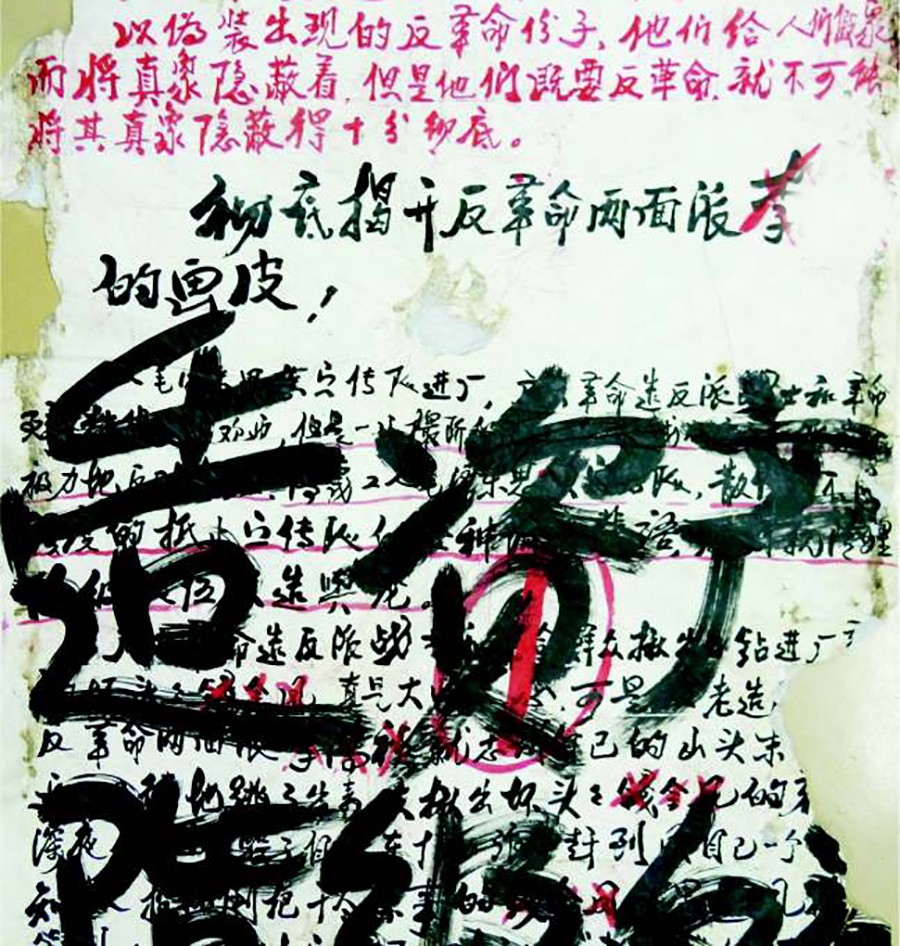
As part of the Fairbank Center’s exhibition of dazibao (大字报 “big-character posters”) and woodcuts from 1960s China, we present a four-part series on Cultural Revolution-era artworks. Denise Ho, Assistant Professor of History at Yale University, presents part 1: an introduction to dazibao and their impact on Maoist China and beyond.
Read Part 2: The Visual Spectacle of “Dazibao” by Xiaofei Tian on our blog.
Read Part 3: Dazibao Exhibitionism by Jie Li on our blog.
Read Part 4: Pictoral Posters by Julia Murray on our blog.
The exhibition, “Red and Black Revolution: Dazibao and Woodcuts from 1960s China” is on display at Harvard University’s Fairbank Center for Chinese Studies from November 9 -30, 2017.
Big-Character-Poster, Defined
What is a Big-Character-Poster? It is a type of political writing, expressed on paper — in handwritten characters — and posted in a public place; a wall covered with such posters established a forum for discussion and dissemination. Big-character-posters played a role in the Hundred Flowers Movement in 1956, during which individuals were encouraged to express their opinions on contemporary politics. In 1958, Mao Zedong wrote that “a big-character-poster is an extremely useful new weapon. It can be used anywhere as long as the masses are there…It has been widely-used, and should be used indefinitely.” Big-character-posters thus became instruments for mass mobilization, especially during the Cultural Revolution. As in these examples in the Fairbank Center’s exhibition, they were used to expose enemies of the revolution, accuse them of crimes, and call for class struggle against them.
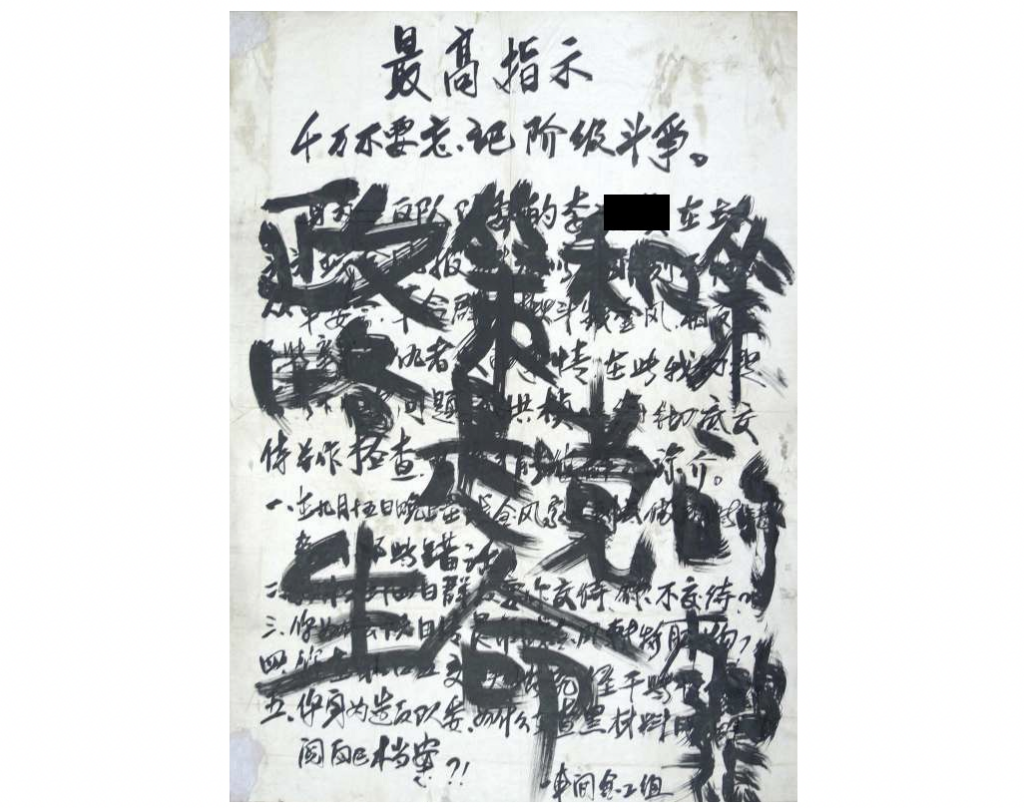
Antecedents
Though the Big-Character-Poster is most often associated with the period of the Cultural Revolution, it had precedents in earlier periods. Writing on the cultivation of national identity in the Republican era, Henrietta Harrison shows how ordinary people celebrated National Day by writing scrolls with republican sentiments. After the death of Sun Yat-sen, China’s founding father, the walls of Central Park in Beijing were covered with funerary couplets, contributed not only by civic associations and Party branches, but also by private individuals. Beyond declarations of loyalty, posters could also be used for dissent: Jeffrey Wasserstrom’s analysis of student protest repertoire includes the use of banners and posters challenging Nationalist policies.
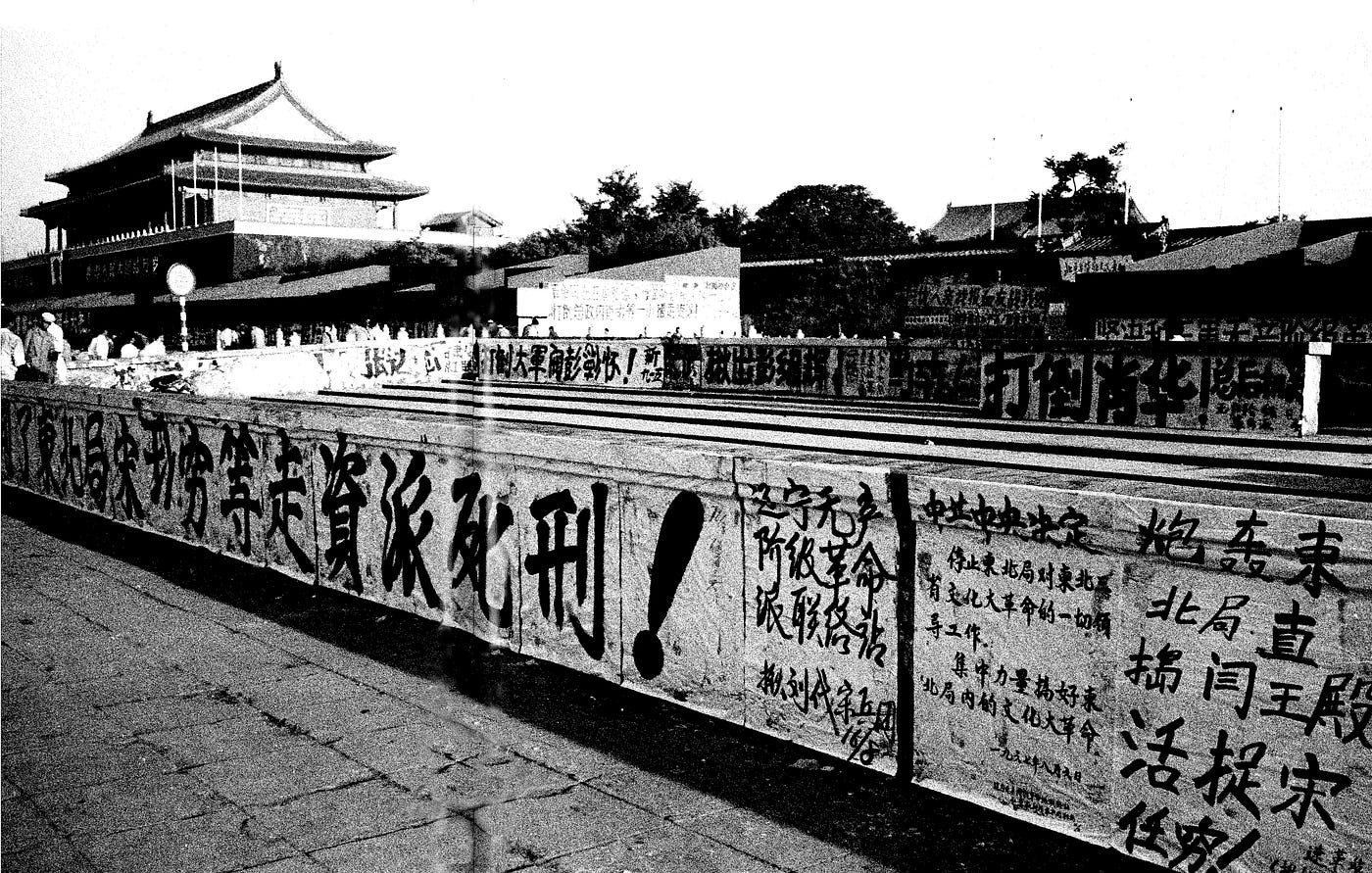
Cultural Revolution
After the establishment of the People’s Republic of China in 1949, the new regime took strict hold over political discourse, both through control of media and publication and through the creation of new political language. In many ways the big-character-poster is seen as a bottom-up mode of expression, and as a way of making revolution at the grassroots. However, there is evidence that people were taught how to write such denunciations in the Socialist Education Movement, and certainly Mao and other leaders encouraged their use. Mao himself wrote a big-character poster, he approved of others’ big-character posters, and the Central Committee’s decision on the Cultural Revolution supported their use “to argue matters out.” But the line between verbal struggle and physical struggle was tenuous: hence these posters on display — written in calligraphy — dehumanize the accused, employ martial language, and call for violence.
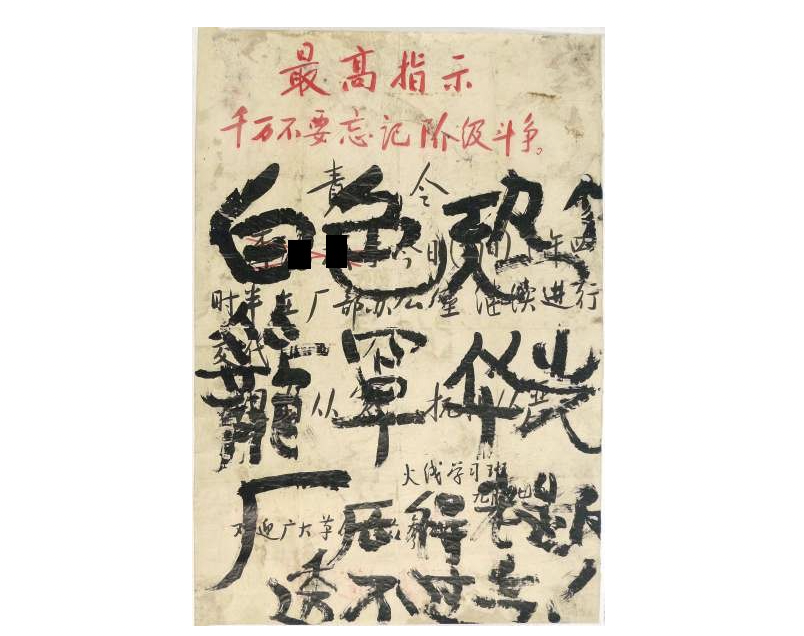
As Information
In the tumult of the Cultural Revolution’s outbreak, the big-character-poster also served as a form of information. Posters were read and copied. Some of the most famous big-character-posters were broadcast via the Central People’s Radio Station. Posters with local targets could be read over the loudspeaker in individual work units or on college campuses. Even as the world outside of China struggled to make sense of its “continuous revolution,” big-character-posters circulated beyond its borders. Japanese correspondents translated posters into English to be shared with others in international media; telegrams to the American consulate in Hong Kong from the Office of the British Charge d’Affaires in Beijing summarized posters and sometimes quoted them in full, referring to one week’s “poster take” or labeling memos “Peking Posters.” The circulation of such posters affirms their role as a source of news.

Legacies
The use of big-character-posters did not end with the Cultural Revolution. Posters appeared in 1976, during student movements in the mid-1980s, and were central to the Democracy Wall movement in 1978. The most famous poster of this period was Wei Jingsheng’s call for democracy as a “fifth modernization.” The state responded by eliminating the clause in the Constitution that allowed people the right to write big-character-posters, and the People’s Daily condemned them for their responsibility in the “ten years of turmoil” and as a threat to socialist democracy. Nonetheless the spirit of the big-character-poster remains a part of protest repertoire, whether in the form of the flyers and notes put up by students in Hong Kong’s Umbrella Movement or as ephemeral posts on the Chinese internet. These Cultural Revolution big-character-posters remind us of the power of words in Chinese politics — as a vehicle for protest and a means of control.
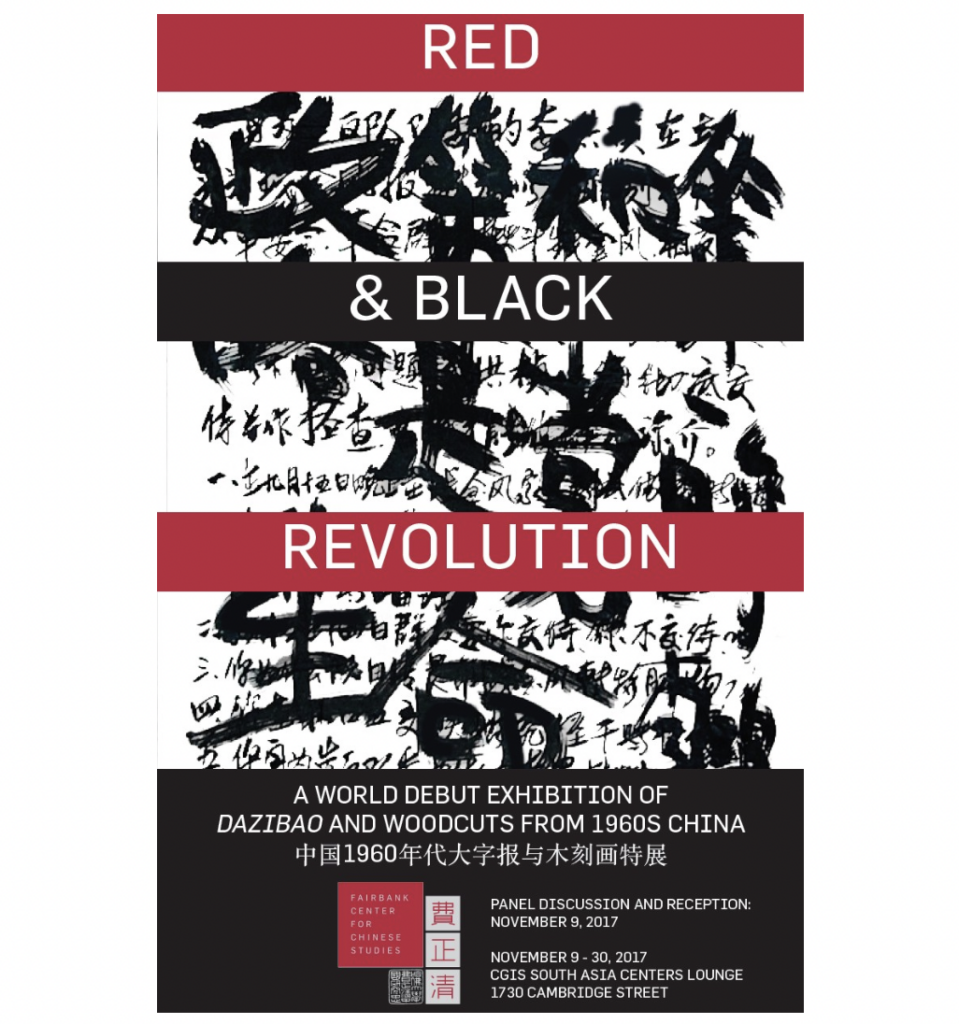
Denise Ho is an Assistant Professor of History at Yale University. Her forthcoming book, Curating Revolution: Politics on Display in Mao’s China (Cambridge University Press, 2017) asks how the Communist revolution transformed China’s political culture.
The exhibition, “Red and Black Revolution: Dazibao and Woodcuts from 1960s China” is on display at Harvard University’s Fairbank Center for Chinese Studies from November 9 -30, 2017.

